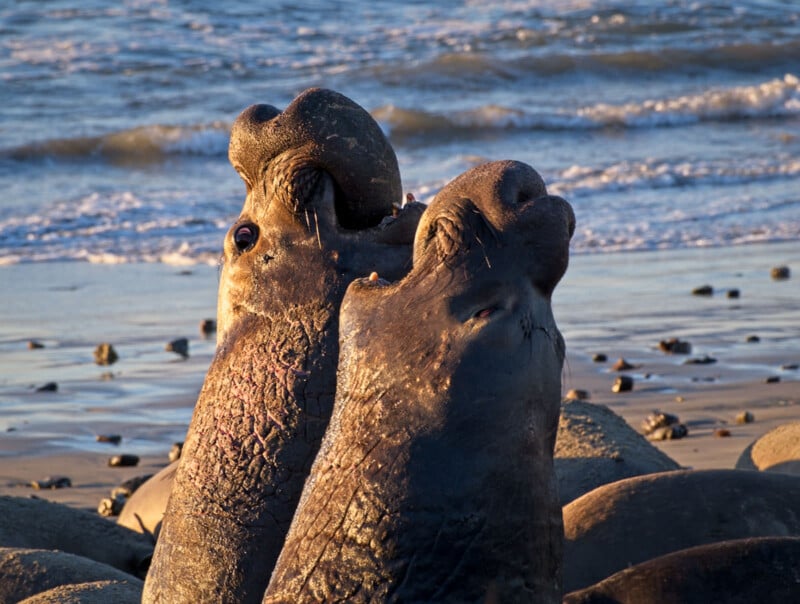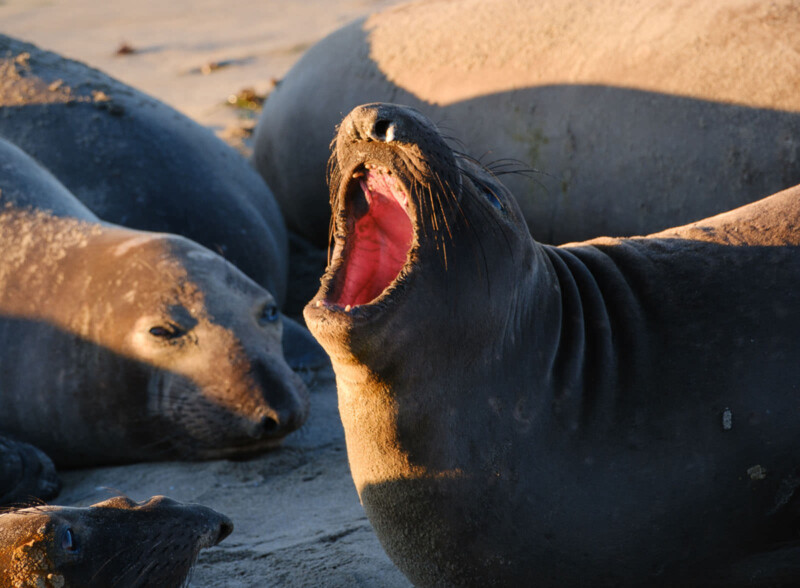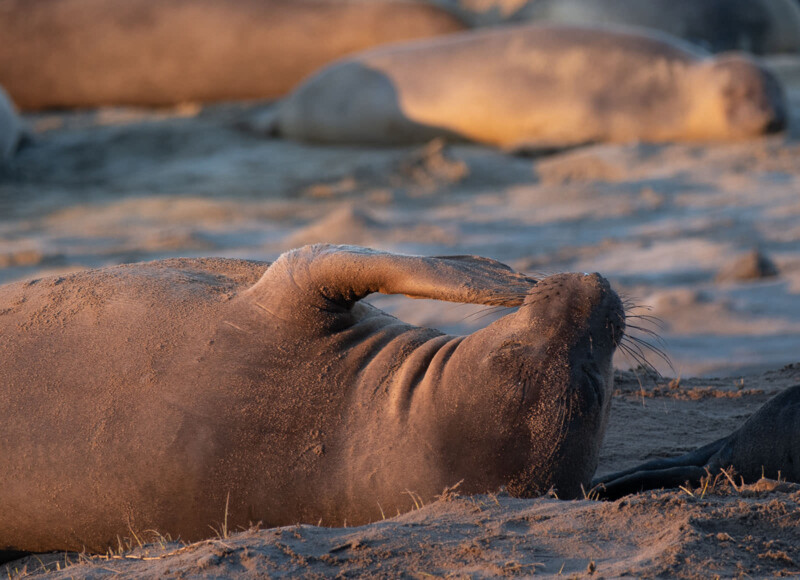It Ain’t The Gear: You Can Shoot Great Photos with Modest Equipment
![]()
Hey, photographers: don’t be discouraged if you can’t afford the latest and greatest gear out there. You may be surprised by what you can do with modest gear.


I boarded a minibus at a California state park guided by a park ranger for special access to elephant seals during mating season. Of the seven participants that boarded, I was the only one without a gargantuan expensive telephoto in the $5,000-$13,000 price range weighing in at ten pounds with a camera body. Amid the parade of exotic gear, there was but one person who had rented a much more modest Sony 200-600mm ($2,000 if you were to buy it.)
The Advantage of Smaller (and Often Less Expensive) Gear
With an APS-C sensor, I was at an advantage with more inherent reach/magnification than a full-frame camera. In fact 50% for 1.5 times more magnification, in full frame terms (full frame equivalent is the de facto standard for comparing focal lengths of lenses) for a given focal length. And Micro Four Thirds cameras are two times the magnification. So if you like to shoot wildlife, a crop sensor camera like APS-C or Micro 4/3 has benefits over more expensive full-frame cameras.

I have been a full-time photographer for 30+ years but if you based the scenario that morning solely on gear and budget, I must have looked like the “amateur” in the group. Now, admittedly wildlife photography is not what I usually sell to patrons. If I sold mostly wildlife images I might also own a more exotic super telephoto or zoom because I could probably justify my ROI (return on investment).
I’ve never hesitated to spend money on gear if it makes good business sense. But if it’s not your profession and you don’t have multiple thousands to spend on lenses, consider what you can do on a more limited budget. And don’t underrate the additional advantage of traveling lighter and the extra reach of smaller sensor cameras like APS-C and Micro Four Thirds.
A Lighter Kit Can Provide More Photo Ops
I certainly don’t begrudge serious hobbyists buying expensive gear, but I never felt like I was lacking anything necessary during my shoot of these wonderful animals. In fact, I felt a freedom the others may not have because it was so easy for me to move around and find shots quickly. I was scrambling up hills, and changing positions and able to get a nice variety of shots. It seemed that bogged down with heavy gear on tripods, the other shooters weren’t seeking ideal vantage points or variety.
Nor did I feel a need for a tripod or monopod. There was plenty of great light. However, if I was using a 600mm f/4 on a top-of-the-line full-frame body, I would definitely have wanted a tripod/monopod just to keep from getting sore limbs and muscles and have a stable platform for maneuvering such a monster.

I realize before dawn, one might feel the need for a tripod for the necessarily slow shutter speeds. But then you are only stabilizing yourself, not the seals who are moving around and will often be blurred from their movement. With IBIS (In-Body Image Stabilization) I can easily shoot at 1/4 or 1/8 sec if I wanted to capture a landscape of the beautiful surroundings that weren’t moving (except the ocean waves of course but slow speeds for that can look nice). As it turns out my best landscapes were after sunrise with direct warm light on the breaking waves.



It All Worked Out
I definitely had the least expensive kit, by a lot. But I actually felt a huge advantage with my lighter, more mobile, yet modest, gear. I thoroughly enjoyed the shoot and finished it without a single sore muscle.
About the author: Joel Wolfson is an internationally published photographer who loves teaching as much as shooting. The opinions expressed in this article are solely those of the author. He shares his 30 years of experience as a working pro with other photographers and enthusiasts by way of his workshops, 1-on-1 training, webinars, articles, blog and speaking engagements. He is one of the pioneers of digital photography, having conducted digital photography seminars for Apple and other corporations starting in the early 90s. This article was also published here.